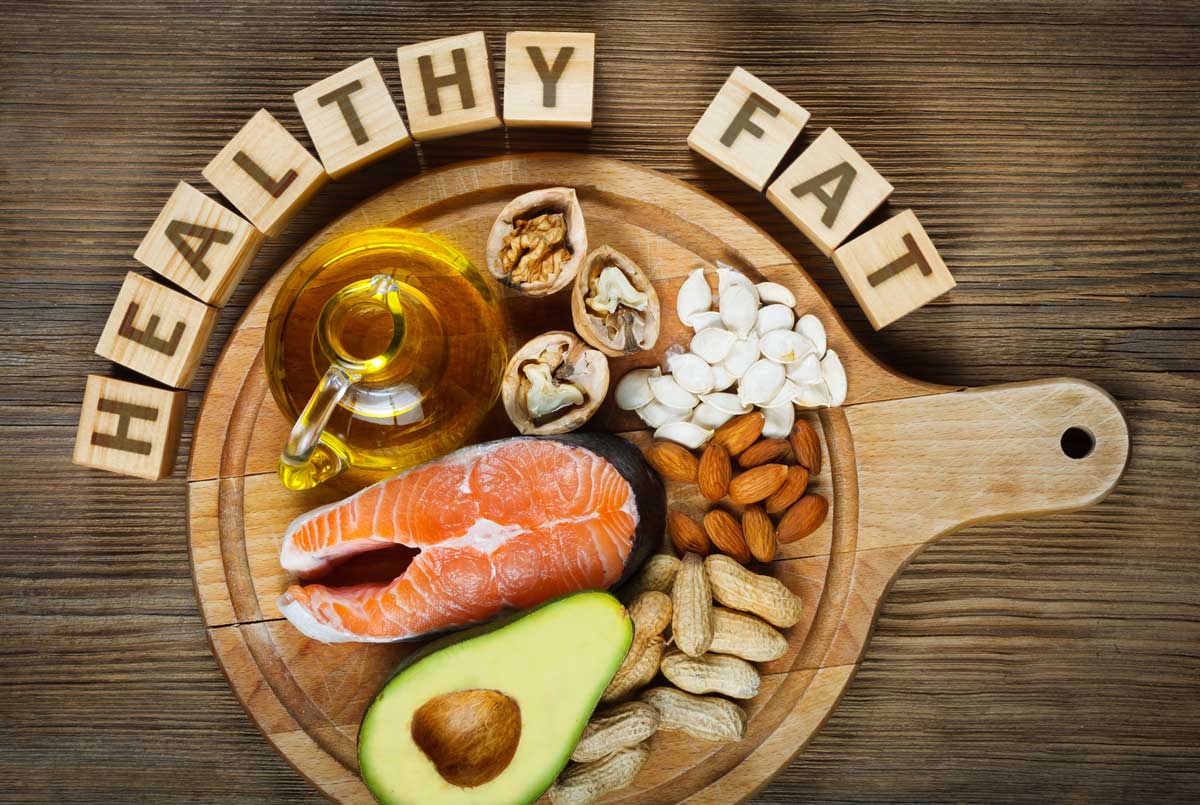This article is the third in a ten-part series on how to build lean muscle. Take a look at Part 1 to catch up. If you want to learn the fastest way to gain muscle, you must structure your diet correctly, in addition to following a proper workout protocol.
Part 2 of this series, we covered how to calculate your body composition (percent body fat vs. percent lean muscle mass), how to calculate your target calorie intake, and how to assess your bioenergetics needs (e.g., carbohydrate, protein, and fat requirements based on the energy needs of your sport).
Now that we’ve covered the fundamentals let’s delve a little deeper into building the ideal diet for gaining lean muscle.
Carbohydrates are Good
Don’t be misled by fad diets that make broad claims about the dangers of carbohydrates. Carbohydrates are the body’s primary source of energy and are required for it to function. They are high in fiber, vitamins, minerals, and antioxidants, which play an essential role in disease prevention, particularly heart disease and cancer. However, when it comes to fueling your body for athletic performance and safely gaining lean muscle, some carbohydrates are superior to others.
 Carbohydrates from whole grains, vegetables, fruits, and beans promote good health by providing vitamins, minerals, fiber, and various essential phytonutrients. Sugary, processed carbohydrates—white bread, white rice, refined grains, pastries, sugary sodas/sports drinks—are highly processed foods that increase fat storage, interfere with fat loss, and promote diabetes and heart disease. Athletes should avoid them.
Carbohydrates from whole grains, vegetables, fruits, and beans promote good health by providing vitamins, minerals, fiber, and various essential phytonutrients. Sugary, processed carbohydrates—white bread, white rice, refined grains, pastries, sugary sodas/sports drinks—are highly processed foods that increase fat storage, interfere with fat loss, and promote diabetes and heart disease. Athletes should avoid them.
Bulk up the RIGHT way with Critical Reload’s Nutrition Guidebook. Learn more here →
Fiber
How can you tell the difference between a “good” carb and a “bad” carb that will help you achieve your muscle-building goals? There are several methods for distinguishing good carbs from bad carbs. The first consideration is the amount of fiber in the food. Fiber is a low-calorie filler that serves two functions in terms of health: 1) it fills your stomach, making you feel fuller for longer; and 2) it takes your body much longer to break down, suppressing your appetite.
There are two kinds of fiber: soluble fiber and insoluble fiber. Soluble fiber can be found in foods such as oatmeal (not instant), beans, barley, and citrus fruits (oranges, grapefruits, kiwi, and so on) and help lower cholesterol levels. Insoluble fiber, commonly found in whole-wheat bread and vegetables, is essential for normal bowel function. Bottom line: eat foods that haven’t been overly processed or contain ingredients that are not overly processed.
Glycemic Index
The Glycemic Index is the second tool for determining the best carbs for your diet (GI). The GI rate measures how quickly you digest food and convert it to glucose (the body’s primary energy source). The higher a food’s rating on the index, the faster it degrades. Essentially, the GI is a measure of which foods cause your body to experience a rapid rise in blood sugar, which then causes insulin production. Because insulin’s two primary functions are to store glucose as fat and act as a sentry to keep fat cells intact, it’s critical to keep insulin levels low when trying to lose or maintain body fat, which means limiting high-GI foods.
Protein
Animal protein and vegetable protein probably have the same effects on health. It is the protein package that likely makes a difference. Let me explain. A 6-ounce ribeye steak is an excellent source of protein — 38 grams worth. But it also delivers 44 grams of fat, 16 of them saturated. That’s almost three-quarters of the recommended daily intake based on a 2000-calorie allotment. The exact amount of salmon gives you 34 grams of protein and 18 grams of fat, with only 4 grams saturated. A cup of cooked beans has 18 grams of protein but less than 1 gram of fat. So when choosing protein-rich foods, pay attention to what comes along with the protein. The best animal protein choices are fish and poultry (without skin). If you are partial to red meat, stick with the leanest cuts. Choose moderate portion sizes, and make them only an occasional part of your diet.
The Good Fats
The total amount of fat you consume, whether high or low, is not associated with the disease. What matters most is the type of fat you consume. Saturated and trans fats are “bad” fats that raise your risk of certain diseases. The “good” fats — monounsaturated and polyunsaturated fats — reduce the risk of disease. The key to a healthy diet is to replace bad fats with good fats and to avoid trans fats entirely. Although it is still important to limit your cholesterol intake, particularly if you have diabetes, dietary cholesterol isn’t nearly the villain it gets portrayed to be. The most important thing is to keep cholesterol in the bloodstream under control. The combination of factors has the most significant impact on blood cholesterol levels. The type of fats in your diet, NOT the amount of cholesterol you consume, has the greatest influence on your blood cholesterol level.
Healthy Fat Tips
- Cook and bake meals with liquid plant oils. Olive, canola, and other plant-based oils are high in heart-healthy unsaturated fats. Dress a salad or vegetables with an oil-based vinaigrette.
- Get rid of trans fat and butter. In the supermarket, look for foods that are trans fat-free and do not contain partially hydrogenated oils. Avoid fried foods in restaurants.
- Consume at least one good source of omega-3 fats per day. Wild-caught fish (salmon or trout), almonds, ground flaxseed, and canola oil contain omega-3 fatty acids essential for heart health.
- Reduce your consumption of meat and milk. Saturated fat is abundant in beef, pork, lamb, and dairy products. Choose low-fat milk, unsweetened almond milk, and indulge in small amounts of full-fat cheese.
Maintain Fluid Intake
 After you’ve established your macronutrient intake, the next step in developing a muscle-building diet is to ensure that you’re getting enough fluids. Many athletes looking for the fastest way to gain muscle fail to consider how much they drink daily.
After you’ve established your macronutrient intake, the next step in developing a muscle-building diet is to ensure that you’re getting enough fluids. Many athletes looking for the fastest way to gain muscle fail to consider how much they drink daily.
Protein synthesis cannot occur as quickly if you are dehydrated, which can significantly impede your results. Aim for at least 10-12, 8-ounce glasses of water per day, if not more, when exercising.
Know that herbal tea and milk count as fluids, but caffeine-containing beverages do not. Sorry, but your grande vanilla latte does not count as 16 oz. of hydrating fluids either. The same goes for sugary drinks (soda, fruit juice, milkshakes, etc.).
Check out The Hydration Calculator for more information. The Hydration Calculator can help you generate more precise custom hydration settings based on calories burned throughout your day and specific continuous, uninterrupted exercise activities.
Manage Your Sleep
 The final step toward safe weight gain is to ensure that you are getting enough sleep. Sleep is essential for building lean muscle when your body goes into deep repair and recovery mode.
The final step toward safe weight gain is to ensure that you are getting enough sleep. Sleep is essential for building lean muscle when your body goes into deep repair and recovery mode.
Aim for at least 8 hours of sleep per night, if not slightly more, when training is intense. If you can, take naps; many athletes who want to build muscle will find that they recover faster with these in place. Sleep is also when the body releases growth hormones essential in lean muscle mass growth and development.
The Sleep Cycle app for your iPhone or Android is an economical way I’ve found to track your sleep quality and quantity. It includes functions for monitoring the amount of time you spend in deep or REM sleep, following the quality of your sleep over time, and identifying potential factors that may be interfering with your sleep (too much caffeine, late workout, etc.). You can even set the alarm to wake you up within a specific time frame when the app detects you are sleeping lightly. That’s pretty cool!
Take Away
So there you have it: some key points to consider when choosing macronutrients for your muscle-building diet and making beneficial lifestyle changes in hydration and sleep to supplement that diet. Check back for the next installment in my 10-part series on building lean muscle, when we’ll talk about how to time your nutrients for the best results0

